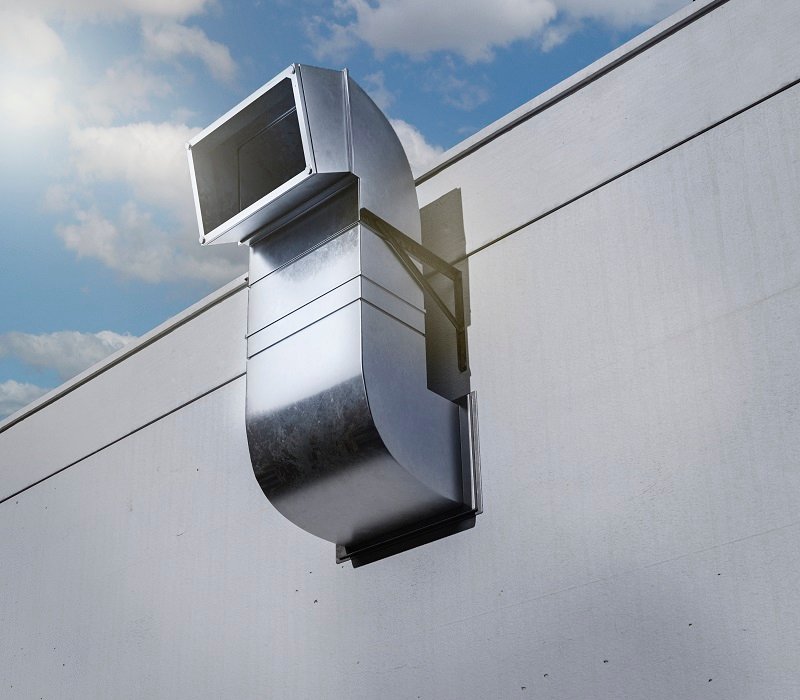1. Introduction to Air Duct Cleaning
Air duct cleaning refers to the process of cleaning various heating and cooling system components of forced air systems. This includes the supply and return air ducts, registers, grilles, diffusers, heat exchangers, cooling coils, fan motors, and the air handling unit housing.
Over time, these components can accumulate dust, pollen, mold, and other debris. If moisture is present, there’s also a risk of microbial growth, which can impact indoor air quality and system efficiency.
2. Why Air Duct Cleaning Is Important
a. Improves Indoor Air Quality
Contaminants such as dust, pet dander, mold spores, and pollen can circulate throughout your home if the ducts are dirty. This can cause allergic reactions or respiratory issues, especially for individuals with asthma or allergies.
b. Enhances HVAC Efficiency
A clean system doesn’t have to work as hard to maintain desired temperatures. This can lead to lower energy bills and extend the life of your heating and cooling equipment.
c. Removes Unpleasant Odors
Foul smells caused by mold, mildew, pets, paint fumes, or food can be trapped in ducts. Cleaning them helps remove lingering odors and freshen the air.
3. When Should You Consider Air Duct Cleaning?
- After a home renovation or remodeling project.
- If you notice visible mold inside the ducts.
- When dust and debris are being released into your home from vents.
- If there’s a rodent or insect infestation.
- Every 3–5 years as a general rule of thumb, depending on usage and environment.
4. The Air Duct Cleaning Process
a. Inspection
Technicians use cameras or scopes to inspect duct interiors for signs of contamination.
b. Cleaning Equipment
Specialized tools such as high-powered vacuums, rotary brushes, and air whips are used. HEPA-filtered vacuums ensure that loosened particles are captured and not released back into the air.
c. Source Removal
This method removes dirt and debris using mechanical agitation combined with extraction. It’s considered the most effective approach.
d. Optional: Disinfectants or Sealants
Some services offer antimicrobial treatments or sealants to inhibit future microbial growth. These should be used with caution and only when necessary.
5. Cost of Air Duct Cleaning
The cost can vary depending on:
- Size of the home
- Number of vents and ductwork complexity
- Accessibility
- Region and provider
Average cost (U.S.): $300–$700 for a standard residential job.
6. DIY vs. Professional Cleaning
DIY:
Homeowners can clean vent covers and accessible ducts using a vacuum and brush. However, it’s not possible to reach deeper components without specialized equipment.
Professional:
Certified professionals follow strict procedures to ensure a thorough clean. Hiring a licensed HVAC company ensures both safety and effectiveness.
7. Choosing the Right Air Duct Cleaning Company
Look for:
- NADCA Certification (National Air Duct Cleaners Association)
- Positive reviews and references
- Clear pricing with no hidden charges
- Use of proper equipment and safety protocols
8. Myths and Misconceptions
- Myth: Air duct cleaning is unnecessary unless there’s a problem.
Fact: Preventative cleaning can improve air quality and system efficiency. - Myth: Duct cleaning damages HVAC systems.
Fact: When done properly by professionals, it poses no risk to the system. - Myth: All cleaning methods are the same.
Fact: Techniques and equipment quality vary. Source removal is the most effective method.
9. Benefits Summary
- Cleaner indoor air
- Reduced allergens
- Better HVAC performance
- Energy savings
- Prolonged equipment life
- Fresher indoor environment
10. Conclusion
Air duct cleaning is an essential part of home maintenance that often gets overlooked. Regular cleanings can significantly enhance indoor air quality, optimize HVAC performance, and provide a healthier living environment. While DIY maintenance is helpful, professional cleaning ensures a thorough job, especially for larger systems.
